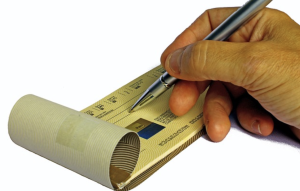When choosing a payment method for your business, you’ll be thinking about how customers pay you and how you pay suppliers. These two actions affect your cash flow and business growth because they control receivables and payables.
So, which payment methods are out there, and what benefits do they offer? We’ll discuss both options, the methods suitable when paying suppliers and when getting paid by customers for your products and services.
Payment Methods Suitable For Businesses
Some payment methods suit brick-and-mortar stores, while others apply to even online businesses. If you run an eCommerce business, you need a payment gateway to secure, verify and transmit payment information from the customer to the bank or network involved in the transaction. It works like a traditional card reader in a physical store.
You also require a payment processor, the intermediary between you and the bank, to execute the transaction. We’re talking about the latter.
Table of Content
Cash
It’s the easiest and probably the cheapest transaction for you and your customer. Also, cash payments take seconds. However, it’s challenging in e-commerce or an environment already heading towards cashless transactions. If you’re in those two situations, consider the options below.
Check

Image by Adriano Gadini from Pixabay
A person writing a check
More people are using online payments instead of writing checks, but that doesn’t mean this payment method is obsolete. Customers can use this method, and you can also pay suppliers the same way. Some advantages are safety compared to cash and the ability to produce proof of payment in the future.
The disadvantage is having to keep track of the remaining leaves so that they don’t run out before you order new checks. Also, a check leaf becomes void when you don’t write check amount words and figures correctly.
eCheck
If traditional checks aren’t appealing to you, try eChecks. As a sender or recipient, you manage your cash flow better as the process takes seconds, which is different from a traditional check. An eCheck uses the Automated Clearing House (ACH) to draw money from a checking account and deposit it into your business account as the merchant. eChecks are a growing trend, especially in eCommerce.
They have almost no amount limits in transfers from one bank to the other, so your customer can buy products or services of any amount from you.
Card
A credit or debit card is a popular and convenient way to pay and receive payments. For a business, the card payments go straight to the bank account, which reduces the temptations that arise when handling cash.
As we mentioned in the introduction, your business needs a secure platform where customers can enter credit card details without worrying about identity theft or fraud. Recurring payments are also possible using credit cards. It could save you invoicing time and your clients the time and energy needed to keep up with your payment deadlines.
Online Payments
Under this group, we’re listing the likes of PayPal, Skrill, Payoneer, and Stripe. One of the latest brands to accept one of these options is Walmart. Customers can use their PayPal account to pay at Walmart online or a PayPal cash card at the counter.
The striking difference between these payment options and checks is their variety and global reach. As such, you have many payment options when you take your brand beyond your state or county. Online payment methods can also serve you as a business as you import supplies.
The drawback of online payment is the fee per transaction, whether you’re paying for something or receiving money from business sales. But it’s okay since you’ll do due diligence and compare the fees associated with online and card payments before using either.
Mobile Payment
It’s another modern platform that’s growing fast. There are several ways to make or receive mobile payments. For example, near-field communication (NFC) connects a customer’s smartphone to a payment terminal that completes the transaction in a physical store. When shopping online, the mobile wallet appears in the checkout process.
Popular mobile wallets are Apple Pay, Google Pay, and Samsung Pay. There are also peer-to-peer payment methods that use mobile apps, such as CashApp and PayPal.Me.
Lastly, another payment method that’s gaining momentum is cryptocurrency. You may want to find out if this digital currency suits your market. Plus, are its benefits better than those you’d experience with traditional payment methods discussed above? Also, think about legalities.
Final Thoughts
Cash is a widely accepted mode of payment, but it’s not an option for online brands. Also, it’s cumbersome to purchase expensive items in cash, even in physical stores. A popular alternative accepted by many is check payments. However, it limits you as a seller or when making business purchases because it takes longer.
That’s where you decide to try eChecks, card, and mobile payment methods. Most importantly, whether it’s a payment method you’re offering to customers or one you use to pay suppliers, let it be affordable, secure, and efficient.